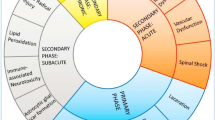Abstract.
Whiplash, a common injury following motor vehicle crashes, is associated with high costs and a prognosis that is variable and difficult to predict. We studied the profile of recovery from whiplash and assessed whether presenting signs and symptoms directly after the crash were predictive of whiplash prognosis. We formed a population-based incident cohort of all 2627 individuals who sustained a whiplash injury resulting from a motor vehicle crash in the province of Québec, Canada, in 1987, and followed these patients for up to 7 years. The data on signs and symptoms were obtained from the medical charts kept by the universal automobile insurance plan (Société de l'assurance automobile du Québec), which covers all 7 million residents of the province, while data on the outcome – the recovery time from whiplash – was obtained from their databases. The median recovery time was 32 days, and 12% of subjects had still not recovered after 6 months. The signs and symptoms that were found to be independently associated with a slower recovery from whiplash, besides female gender and older age, are neck pain on palpation, muscle pain, pain or numbness radiating from the neck to arms, hands or shoulders, and headache. Together, these factors in older females (age 60) predicted a median recovery time of 262 days, compared with 17 days for younger males (age 20) who do not have this profile. In contrast, using a classification of injury severity previously proposed by the Québec Whiplash Associated Disorders Task Force, the median recovery time varied from 17 to only 123 days. We conclude that whiplash patients presenting with several specific musculoskeletal and neurological signs and symptoms will have a longer recovery period. These patients can easily be identified and closely monitored and targeted for the evaluation of early intervention programmes aimed at managing whiplash patients with a poor prognosis.
Similar content being viewed by others
Author information
Authors and Affiliations
Additional information
Electronic Publication
Rights and permissions
About this article
Cite this article
Suissa, S., Harder, S. & Veilleux, M. The relation between initial symptoms and signs and the prognosis of whiplash. Eur Spine J 10, 44–49 (2001). https://doi.org/10.1007/s005860000220
Received:
Revised:
Accepted:
Issue Date:
DOI: https://doi.org/10.1007/s005860000220




